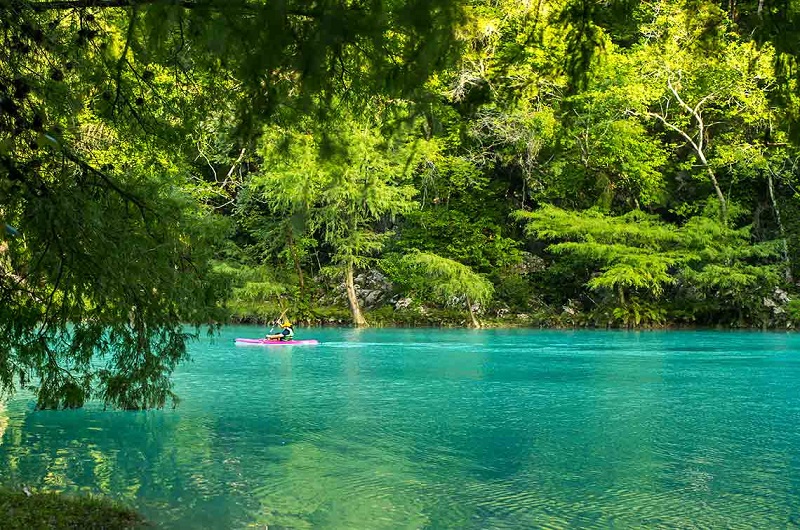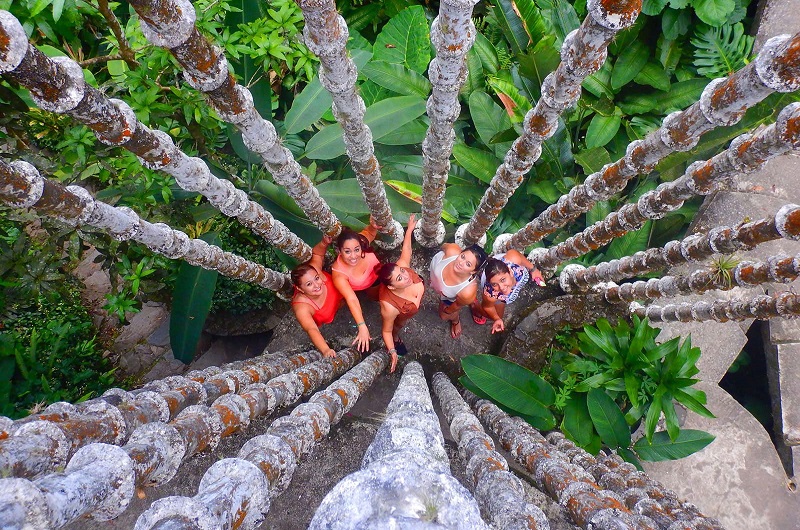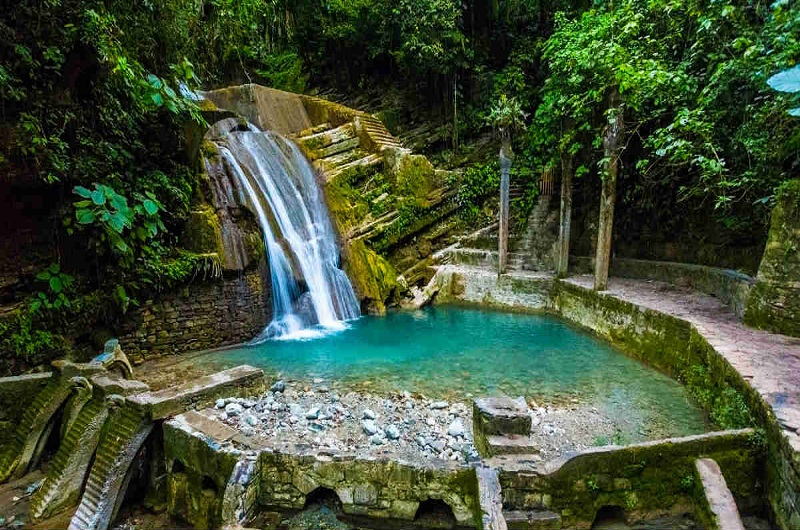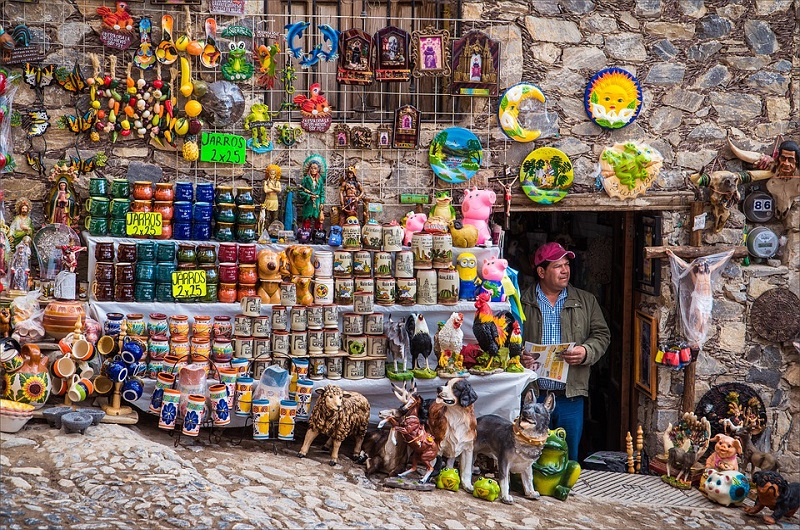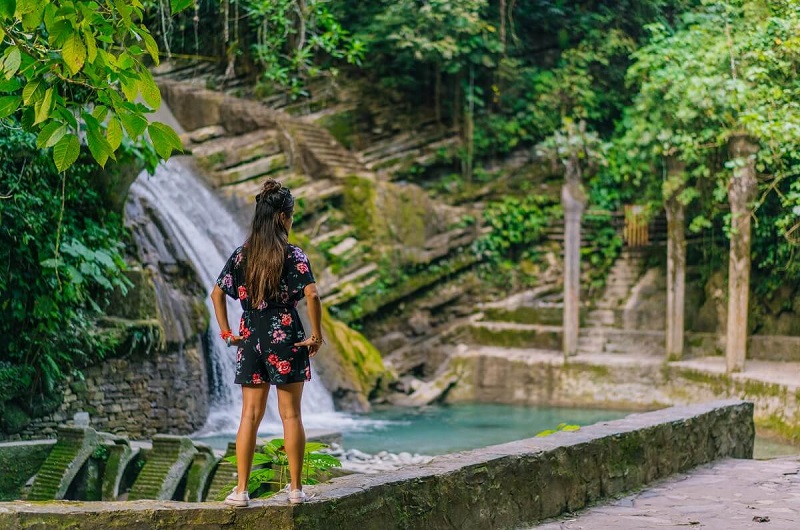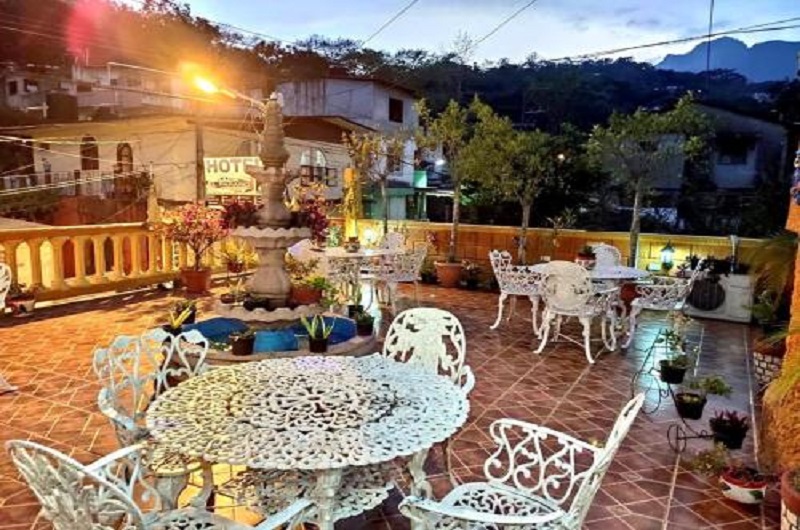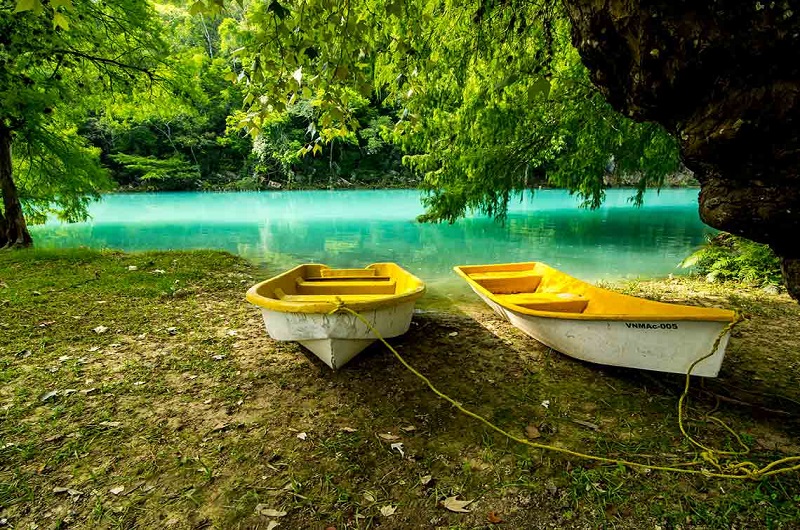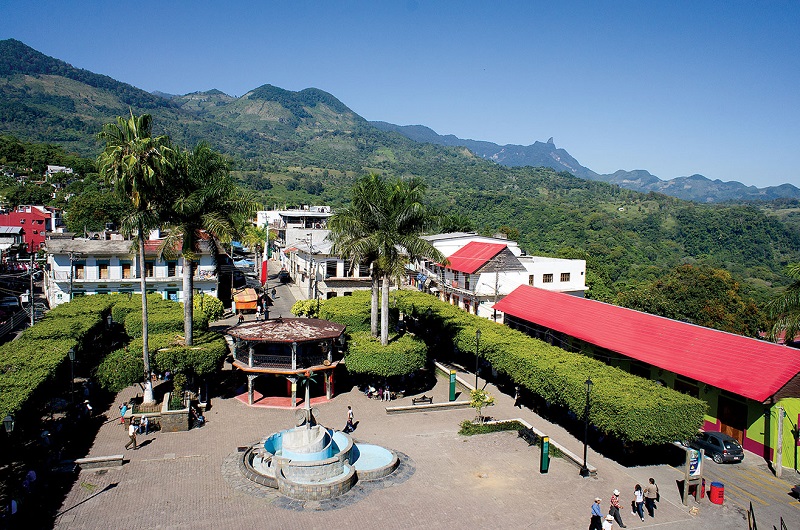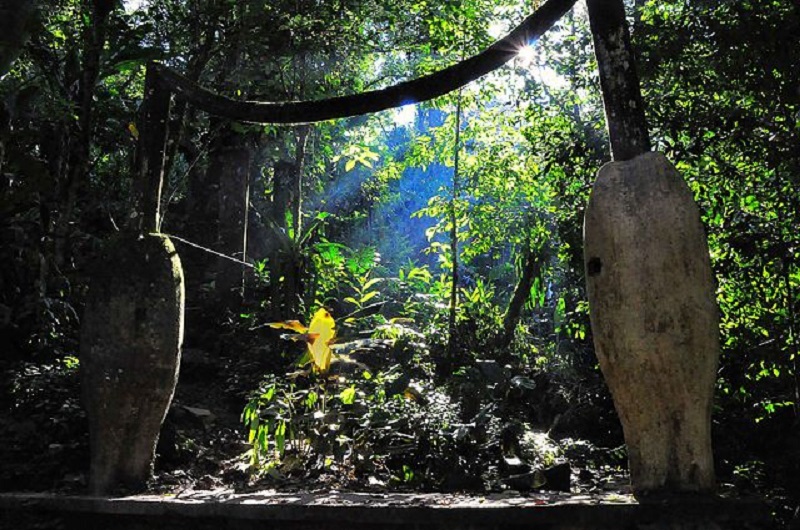Magico Xilitla Breathtaking stone sculptures await you – Activities
But Xilitla does not forget its Nahuatl and Tenek past, which it shows in all its glory on the Sunday market, to the sound of the Huapango and with the preparation of the exquisite zacahuiles, which consist of tamales of up to two meters and are ideal for sharing .
Xilitla's current fame is largely thanks to Las Pozas. This series of dreamlike constructions emerges in the midst of lush vegetation, in which the English millionaire Edward James, who used it as a resting place, set up several surrealistic sculptures that communicate via labyrinths and bizarre paths.
Among the compositions stand out: "The Staircase to Heaven" and "The Path of the 7 Serpents", with each sculpture representing a major sin. All of these figures first had to be cast in wood to form like a puzzle.
Part of the charm of this place is that the sculptures appear incomplete and defy time and space. Within the same garden there are a number of waterfalls, of which "La Cascada del General" is the most beautiful and impressive.
Make sure to try the delicious zacahuiles and the delicious coffee and piloncillo from the region in Xilitla. You can also buy San Pedro Huitzquilico handicrafts here, such as seed jewelry, clay figurines, and blackberry wood utensils, which are considered to be the toughest and toughest. Don't forget to enjoy the music and dance of the Huapangueada, which are based on the city's traditional genre.
Magico Xilitla Breathtaking stone sculptures await you – Magico Xilitla
➢ Your possible activities Without a doubt, this original and unique space is Xilitla's greatest attraction. This surrealistic sculpture garden is only 3 km from the city, created by millionaire Edward James, godson of King Edward VII of England, from 1949. Las Pozas' aim is to breathe life into a lost and labyrinthine city in the middle of the jungle. And the same feeling achieves it: inverted columns, Gothic windows, eye-shaped hot tubs, and moss-covered stone flowers are some of the sculptures that challenge common sense and the law of gravity. The garden extends over 30 acres and includes parts of various styles and paths, as well as stairs that lead to nowhere. It also has a structure called "El Castillo" which Edwards "
➢ Los Comales TemazcalVery close to Las Pozas is Los Comales Temazcal, where you can not only have a relaxing experience, but also watch the impressive waterfall, which is one of Xilitla's best kept secrets.
➢ Tianguis and traditions
Every Sunday - from seven in the morning to six in the afternoon - the Tianguis drive through the main streets of Xilitla to offer countless foods and handicrafts.
You can't stop trying the most typical dish in town: the zacahuiles, tamales up to two meters in length. In order to be able to enjoy this delicacy to the fullest, the participants of the Tianguis meet to have a cup of atole or exquisite coffee. You can also buy San Pedro Huitzilico handicrafts and amber candles at this market.
Magico Xilitla Breathtaking stone sculptures await you – Magico Xilitla
➢ Miguel Hidalgo Garden
On the same day in the Miguel Hidalgo Garden and at the end of two in the afternoon, the Sunday Huapangueada takes place. This festival consists of the revival of the Huapango genre, where children, women and men with carnival masks stand on the stage and dance to the rhythm of the trios.
➢ Visit of the colonial constructions
The oldest colonial building in the state is located in Xilitla: the ex-monastery of San Agustín , built in 1557 . This monastery and war building was equipped with a large fortress in which the Chichimecas were housed. Although it withstood multiple wars, its front cover was virtually destroyed, so ironically, the back is now the entrance.
The former monastery was abandoned by the Augustinians and later discovered among weeds and animals. From the bell tower you have one of the best views of the city and on a clear day you can see the emblematic Cerro de la Silleta .
The Edward James Museum houses many of the personal items and photographs of the creator of the surrealist garden in Las Pozas. It is located next to the old house of Plutarco Gastelum, today's Posada El Castillo.
➢ For lovers of extreme sports
Magico Xilitla Breathtaking stone sculptures await you Magico Xilitla
For lovers of extreme sports and nature, Xilitla offers several options. Just before arriving in town, we recommend visiting Cueva del Salitre , where you can practice climbing in a huge cave. For mountaineers there is La Silleta, a mountain range that is quite a challenge, and for abseiling the Sótano de Tlamaya .
To take home the best photos, head to Parador El Paraíso , from where you can see the deep Tancuilín Canyon and beautiful mountain views. Or go to La Silleta(15 miles from Xilitla), one of the highest points in San Luis Potosí. While climbing, you can enjoy the Sierra Madre Oriental mountain range.
➢ Magic Town Aquismon, Tampatz most beautiful and mysterious places
In the heart of the Sierra de Tampatz is this city that is home to the most beautiful and mysterious places of Huasteca nature . Rivers and mountains together form amazing waterfalls, caves and cellars that will impress any traveler.
Magico Xilitla Breathtaking stone sculptures await you – » The future of touring, is Habibi Word Travel & Tour
➢ Tamul waterfall
The sound of the water rushing into the abyss could make you abandon an unforgettable adventure : abseiling right next to the Tamul waterfall. But you will dare to take the first jump when you look at the landscape: turquoise rivers , capricious formations and the lush jungle that surrounds this natural wonder of the municipality of Aquismón , the center of which was named Magic Town in 2018.
➢ Panga, rafting rafts and paddle surfboards
Tamul can also be seen from below, where the curtain of water meets the Tampaón River. To get there we take the services of a certified tour operator who organize tours in panga, rafting rafts and paddle surfboards to avoid the rapids that form in this channel of turquoise water. .
➢ Sótano de las Huahuas and a scandalous sunrise
Not all waterfalls are in Aquismon. Here is also the sixth deepest underground natural abyss in the world, the Sótano de las Golondrinas, with a free fall of almost 512 meters. Every day at 5:30 a.m., a unique spectacle emerges from inside: the synchronized flight - in the form of a whirlpool - of millions of Swifts who travel to the Gulf of Mexico in search of food. See the scene from the lookouts near the cave mouth.
Another similar show takes place a few kilometers from this rift. This is the Sótano de las Huahuas, which is inhabited by green parrots and white-breasted swifts. His birds have a protocol to get out of the abyss: in the first flock those with chicks go; They are followed by the oldest and finally the young who learn to fly. Very close to this city is also the Sótano de las Golondrinas, which is considered one of the 13 natural wonders of the world and is the ideal place for abseiling and caving.
Magico Xilitla Breathtaking stone sculptures await you – Magico Xilitla
➢ Note:
In addition to its natural landscapes, Aquismón is characterized by its exquisite gastronomy, its ancient traditional medicine and the rich handicrafts made by the hands of its artisans.
➢ Sótano de las Golondrinas
Dare to conquer skyscrapers, steep slopes and the bottom of a mysterious abyss. We present three great destinations for taking a vertical adventure to the extreme!
Mountains, canyons, cliffs, volcanoes and valleys, undoubtedly the formations of nature on the surface of the planet, are infinite, and for some reason we tend to believe that we know most of them, but there is some kind of relief which cannot be appreciated everywhere: the sinkholes; these pronounced and very deep depressions in the ground.
One of the largest in the world is located in the heart of the Huasteca Potosina . It is the Sótano de las Golondrinas, a hole with a diameter of 60 meters that is driven 512 meters towards the center of the earth . Natural light only illuminates the upper part of the basement and thanks to this you can see the horizontal lines of the sediments on the limestone cliff. A few meters inside, however, there is only darkness.
Magico Xilitla Breathtaking stone sculptures await you – Magico Xilitla
In addition to the natural feel, this site hosts a show with the thousands of birds that inhabit the loch . Although many classify them as swallows, the birds that are seen are white-necked swifts (very similar to). Each morning a herd begins to start the day and at dusk they return and rush over the cliff back to their nests.
Mountains, canyons, cliffs, volcanoes and valleys, undoubtedly the formations of nature on the surface of the planet, are infinite, and for some reason we tend to believe that we know most of them, but there is some kind of relief which cannot be appreciated everywhere: the sinkholes; these pronounced and very deep depressions in the ground.
One of the largest in the world is located in the heart of the Huasteca Potosina. It is the Sótano de las Golondrinas , a hole with a diameter of 60 meters that extends 512 meters towards the center of the earth is driven. Natural light only illuminates the upper part of the basement and thanks to this you can see the horizontal lines of the sediments on the limestone cliff. A few meters inside, however, there is only darkness.
Magico Xilitla Breathtaking stone sculptures await you – Magico Xilitla
In addition to the natural feel, this site hosts a show with the thousands of birds that inhabit the loch. Although many classify them as swallows, the birds that are seen are white-necked swifts (very similar to). Each morning a herd begins to start the day and at dusk they return and rush over the cliff back to their nests. There's another place in Mexico where something similar happens. La Sima de las Cotorras in Chiapas ; Another sinkhole was embedded 140 meters underground. It is home to thousands of green parrots,
that shoot at the beginning of each day . There are also cave paintings that are thousands of years old on the rock walls .
➢ Since pre-Hispanic times
Magico Xilitla Breathtaking stone sculptures await you – Magico Xilitla
The origin of this extravagant formation goes back to a fault that occurred millions of years ago and which has expanded due to the constant erosion that water causes on the stone. For centuries, the Teenek culture that lives in the Huasteca has linked this hole (called Jolol Uclif in the Teenek language) with the god of thunder, which is why it is considered a place for ritual activities.
➢ Note:
For those unfamiliar with this place, the abyss is so great that a commercial plane could easily be accommodated in it. We recommend a good equipment with sufficiently long ropes, various belts, helmets and protective devices as well as sleeping bags and tents (you can camp with permission on site).
➢ Recommended for:
For professional descenders only. However, there are smaller caves and abysses in the area where beginners can experience the excitement of this extreme sport on a smaller scale.
Magico Xilitla Breathtaking stone sculptures await you – Magico Xilitla
Mágico Xilitla
Tour Duration:
The price depends on your wishes, as well as hotel choice, visits. We therefore ask you to provide details when booking. So we can start putting together an offer for you.
Price: US Dollar $ request
per person

